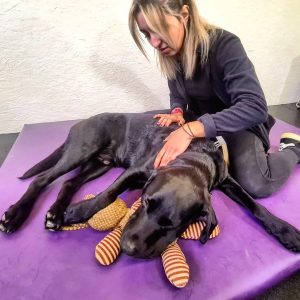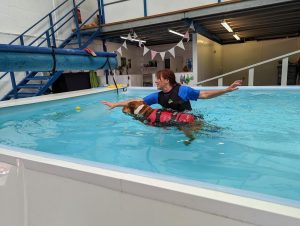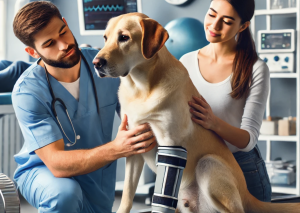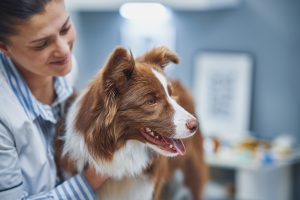We are constantly talking about muscles with our dog owners, in this article we have tried to simplify the complexities of what your dogs muscles do and explore which major muscles are used during different types of exercises.
Any dog owner that has run playfully through their local park with their beloved pet has no doubt marvelled at the speed and graceful manoeuvrability a dog possesses. The muscular anatomy of a dog, while serving the same purpose in a dog, differs in structure and function from the muscular system in a human body. Just as the human muscular system is composed of units of tissue connected to the skeletal system, skin, and other muscles, a dog’s muscle anatomy is arranged in a similar fashion. Additionally, both muscular systems use the power of contraction to produce movement.
The muscle anatomy of a dog serves two important purposes. The first, and most obvious, is to facilitate movement of the limbs, head, neck, and joints. An equally important function for muscles is to provide stability to the joints of the body, making it easier for them to function under pressure.

Swimming
As you can see swimming uses the largest range of muscles across a dog during exercise.
Some of the muscles and muscle groups used include:
- Lower Trapezius
- Supraspinatus
- Infraspinatus
- Latissimus Dorsi
- Biceps
- Triceps
- Deltoids
- Longissimus Dorsi
- Gluteals
- Bicep Femoris
- Sartorius
- Semitendinosus
- Quadriceps
- Epaxials

Long Walks
Long walks encourage engagement from the pectoral muscles but not the muscles along the back.
Some of the muscles and muscle groups used include:
- Upper Trapezius
- Lower Trapezius
- Biceps
- Triceps
- Deltoids
- Rib Intercostal
- Rectus Abdominus
- Deep Pectoral
- Gluteals
- Bicep Femoris
- Sartorius
- Semitendinosus
- Quadriceps

Running
Running engages slightly fewer muscle groups than swimming with greater force on joints.
Some of the muscles and muscle groups used include:
- Latissimus Dorsi
- Biceps
- Triceps
- Deltoids
- Longissimus Dorsi
- Gluteals
- Bicep Femoris
- Sartorius
- Semitendinosus
- Quadriceps
- Epaxials
What do these muscles do
There are seven major muscles found in the fore limb of the body and they include the:
- Supraspinatus
- Infraspinatus
- Pectoral
- Trapezius
- Biceps brachii
- Brachialis
- Triceps brachii
The supraspinatus and infraspinatus muscles are responsible for controlling the shoulder and supporting the shoulder joint. The former allows a dog to extend the shoulder during movement, while the latter flexes the shoulder joint.
Pectoral and trapezius muscles in a dog control the flex and movement of the legs. While the pectoral muscle allow for the inward movement of legs (towards the midline of the dogs body), the trapezius muscle controls the outward movement of legs (away from the midline of the dogs body) while also allowing dogs to elevate their legs.
The biceps and triceps control the flex and movement of elbows and assist in the extension of shoulders.
When it comes to the hind limb region of the body, there are another seven more major muscles or groups that help control and support the movement of hip muscles and joints. These muscles include the:
- Gluteal muscle
- Biceps femoris
- Semitendinosus
- Semimembranosus
- Quadriceps femoris
- Cranial tibial muscles
- Achilles tendon
Gluteal muscles help a dog extend and move the hip joint outward from the body.
The biceps femoris, semitendinosus, and semimembranosus all help support the extending and flexing of the hip, stifle, and tarsus features of the body.
The quadriceps femoris is a powerful muscle that extends the stifle while also flexing the hip.
The cranial tibial muscles and achilles tendon both help dogs flex the tarsus, extend digits, and also flex the stifle.
All of these muscles within a dog’s body have to work together in a delicate balance to help create stable, fluid movement. When your dog is bounding across an open field or yard in pursuit of a tennis ball or chew toy, that function is never as simple as one muscle, or even one muscle group, contracting and flexing to make movement possible.
Images courtesy of Inga Paviloniene | Facebook 2020












